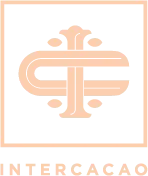
Evaluation 5.0
SWEET FRUITY 2.6
CITRUS FRUITY 4.0
FLORAL 0.5
CREOLE 3.4
CACAO 3.6
WOODSY 0.8
SPICES 0.6
ANNUAL PRODUCTION (MT) 25
MAIN HARVEST DEC-MAR
MID HARVEST JUN-JUL
CREOLE BEANS 22%
FERMENTED BEANS 90%
PURPLE BEANS 6%
SLATE BEANS 2%
TOTAL 100%
Beans / 100g: 83
g./1 Bean: 1.20 g
CERTIFIED YES
AWARDS NO
Physical and Organoleptic Characteristics
Positive Flavors
Raisins • Prunes
Orange
Orange • Tangerine
Malt • Sugarcane • Panela • Roasted Peanuts • Almonds • Walnut • Caramel
Cocoa
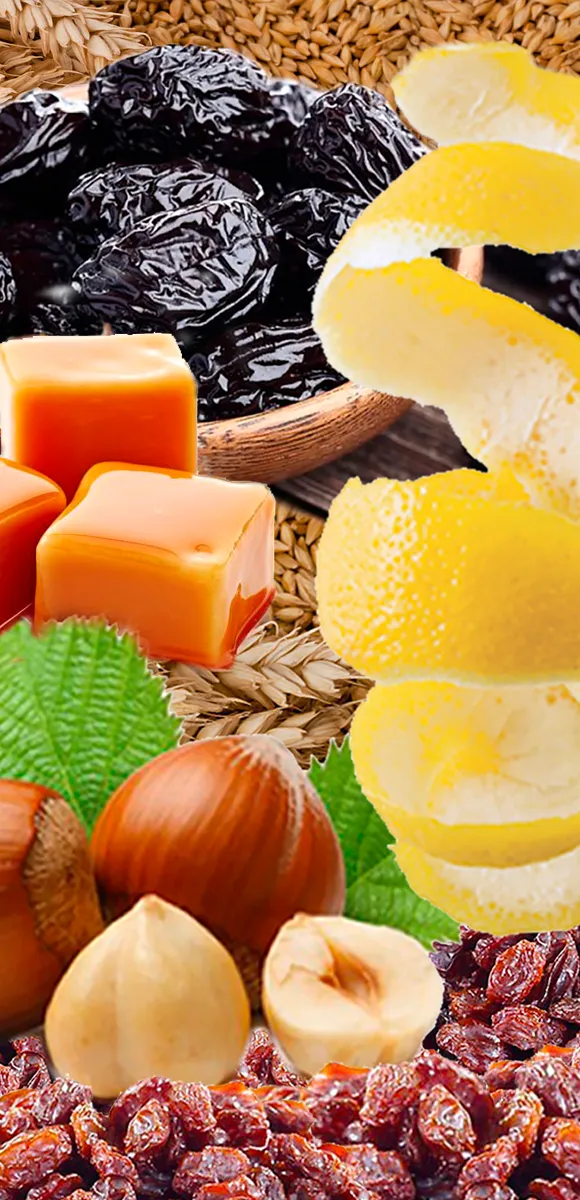
Evaluation
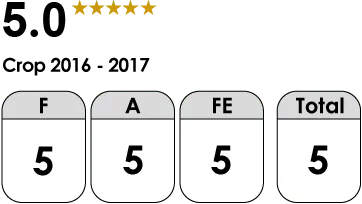
T = Taste:
STRONG Denotes nutty flavor
A = Aroma:
STRONG Pronounced notes of fruity and floral essences
F = Fermentation:
HIGH High levels of astringency and bitterness


Analysis of Cut
Chuao cocoa, due to its Trinitario genetics with high Criollo ancestry, produces up to 40% white beans that provide its quality and aroma.
The bean possesses specific physical qualities derived from its Trinitario genetic types with high Criollo introgression.
The predominant color tones in the seed's appearance vary between mahogany, cinnamon, and caramel.
Its cut analysis shows fermented beans (±86%), violet beans (±8%), and slate-colored beans (±6%).
Regarding weight, the beans typically contain 69 almonds per 100g, meaning each almond weighs 1.45g.

Flavor Map
Its aromatic and flavor qualities are shaped by the geographical environment, agroclimatic conditions, coastal proximity, and a unique ancestral post-harvest process that controls removals, turnovers, and proper drainage of exudates. Combined with the dedication of its producers in agronomic management, this grants it the title of the world's finest and most expensive cocoa.Eng. Ms. Gladys Ramos, Agricultural Sciences Researcher.
The prodigious Chuao Cocoa possesses a unique and intriguing flavor that evokes a sublime sensation, resulting from unparalleled genetics.
Key organoleptic characteristics include a moderate cocoa flavor intensity of 4 on a 0-10 scale, with clean citrus acidity from tropical fruits and the sweetness of black fruits like prunes (due to shade processing), while maintaining low astringency.

Sensory Map
It emanates an aroma with high fragrance intensity that distinguishes it from others, featuring floral essences like orange blossom and tangerine, along with fruity notes such as prunes.
This exceptional bean is characterized by a creamy, smooth, and velvety mouthfeel that dissolves in the palate. Its dense flavor lingers in the aftertaste, leaving prominent chocolate, nut, and hazelnut notes in the oral cavity.

Post-Harvest Process
The production of Chuao Cocoa requires the following stages: Harvesting with machetes or sickles for high branches, transportation to processing sites, pod breaking, bean extraction, and fermentation.
Fermentation Protocol
Cocoa Type

Trinitario

Criollo
Fermentation Period
4 to 5 days
-
Box type: Wooden
-
Turnover frequency: Every 24 hours
-
Process: Beans in pulp are spread on banana/plantain leaves across six wooden boxes with removable sidewalls.
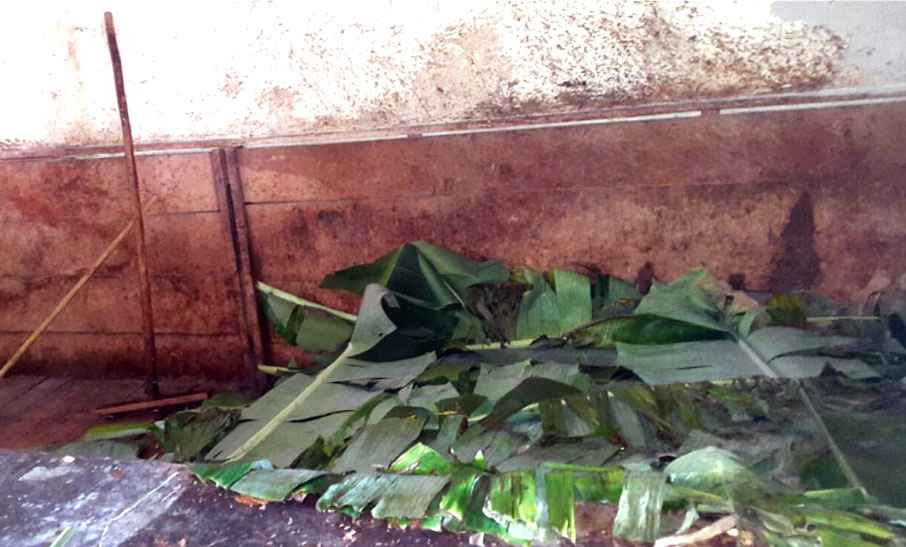
Drying Protocol
Cocoa Type

Trinitario

Criollo
Drying Period
4 to 5 days
Drying Techniques
-
Floor type: Cement/concrete
-
Moisture: 7.5%
-
Method: Sun-dried
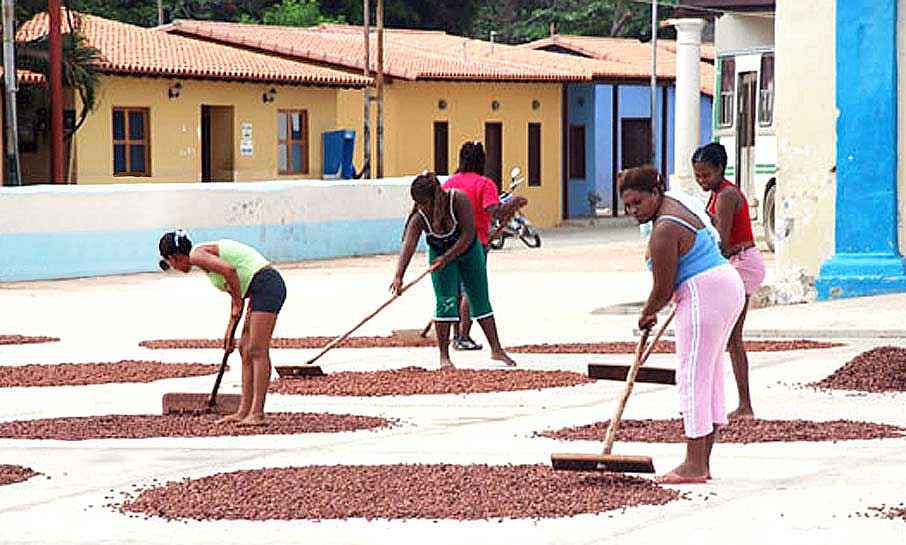
This process is performed by local women who apply extensive expertise to evaluate color and weather conditions for optimal final product quality.
Traceability
Certifications and Awards
Certificate of origin and traceability validating the cocoa bean's provenance.
In partnership with Campesina Chuao Corporation, we guarantee a Certificate of Origin and Traceability that authenticates the distinguished bean's authenticity and source.
The total population of Chuao parish is estimated at 2,331 native inhabitants, with 125 dedicated to cocoa production. All are active members of the Association of Producers and Artisans, legally established as Campesina Chuao Corporation.
Most Chuao residents descend from Afro-Venezuelan enslaved ancestors who now preserve generational traditions, maintaining passion from cocoa cultivation through final production stages of this exquisite fruit.
In Chuao, land stewardship is primarily managed by families specializing in cocoa cultivation. Women dominate this economic activity, privileged to produce world-class cocoa using proven techniques, experience, and traditional work songs during cultivation.
Residents live in dignified housing distributed across 287.4 productive hectares, including 162 Ha of active cocoa plantations yielding approximately 25 metric tons (MT) annually.
Secondary community activities include sea fishing, followed by tourism and commerce, using essential boat transportation through the river flowing from ancestral mountains to the magical town's coast.
Chuao features three harvest seasons: Pascuera, Cuaresmera, and Sanjuanera - the longest occurring in June.
Product processing is coordinated through Campesina Chuao Cooperative. Two specialized teams operate: cultivation (planting alignment and river irrigation) and maintenance (suckering/pruning). Workforce comprises 73 women and 50 men, maintaining female-dominated ancestral practices.
Chuao's artificial irrigation system uses river-fed channels through flood/drain methods. Excellent valley drainage to sea maintains optimal slope conditions.
Post-processing, beans are selected and packed in new 61kg jute sacks. Transported by truck to Chuao dock, then via launch to Puerto Colombia (Choroní) before reaching distributors' warehouses.
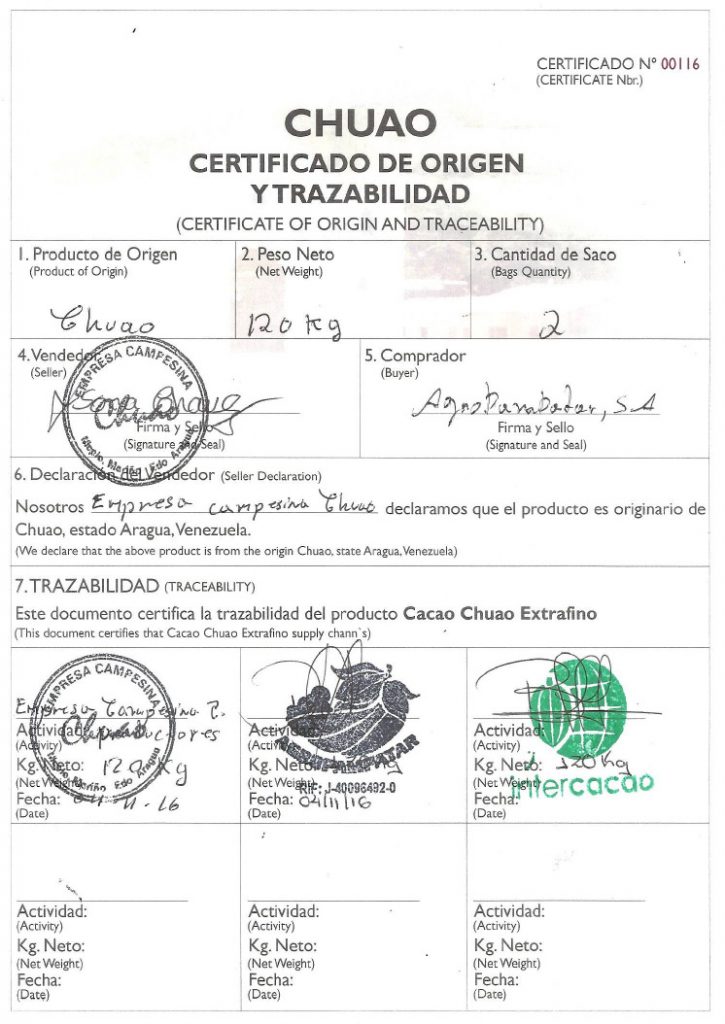
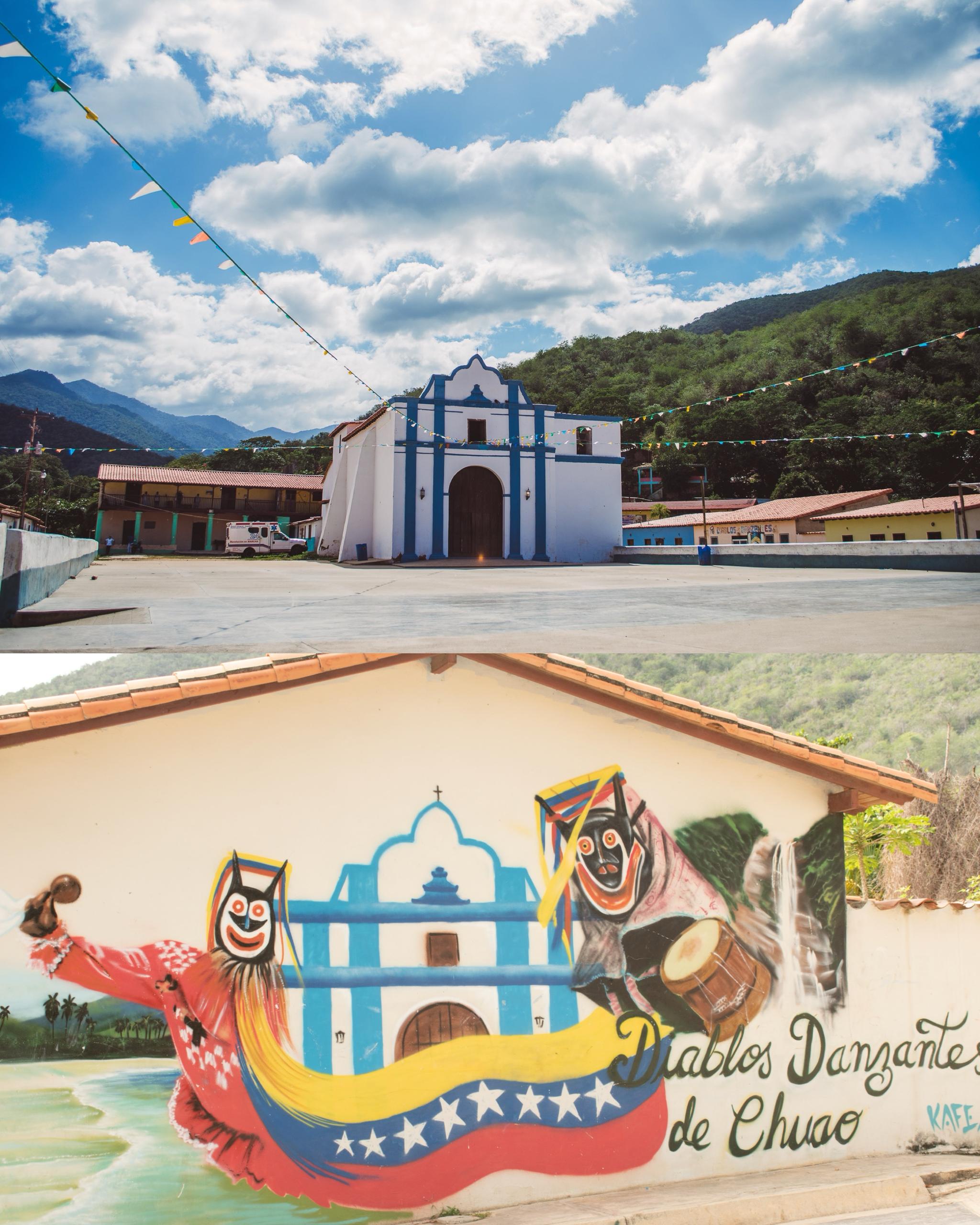
Geographical Location and Ecology
Geographical Location
- Country: Venezuela
- State: Aragua
- Municipality: Santiago Mariño
- Area: 160 km²
- Average Altitude: 254 m (833 ft)
- GPS Coordinates: 10°29'36"N 67°31'38"W
- Population: 2,331
Chuao parish is located in the heart of the intermontane valley of the Venezuelan Coastal Mountain Range, specifically in Aragua State. Situated 6 km from the Caribbean Sea, it forms part of Henri Pittier National Park.
Access to Chuao is exclusively via maritime routes. There are two pathways: from Choroní by boat (25-minute journey), or through the mountains surrounding Turmero Peak via the cocoa route within the park.
Ecology
The rich fauna diversity stems from Chuao's location bordering Henri Pittier National Park. Its ecological system thrives with average temperatures of 27°C and annual rainfall of 1,000 mm.
The area hosts exceptional biodiversity: 140 mammal species and 580 bird species, including peregrine falcon, swallow, harpy eagle, solitary eagle, Wetmore's rail, stone-curassow, chachalaca, collared trogon, green macaw, and red siskel.
As part of Henri Pittier National Park, the cloud forest contains 150 tree species per 0.25 ha. The 'niño' or 'cucharón' tree (Gyranthera caribensis) stands as the most representative species.


History


For over 450 years, Chuao has cultivated cacao. Its agricultural origins date to the 17th century when Carib indigenous people, the original inhabitants, were nearly exterminated by Spanish colonizers.
With the arrival of colonial overseer Cristóbal Mejía, cocoa plantations expanded through the forced labor of enslaved Africans, establishing a new exploitative production system.
In 1671, the Chuao Estate was donated to the Catholic Church and became known as 'La Obra Pía de Chuao' (Chuao's Charitable Foundation).
In 1827, following independence movements, Simón Bolívar transferred the estate to the University of Caracas (now Central University of Venezuela).
Surrounded by cloud forests and estuaries, Chuao's mountainous ecosystem creates ideal conditions for producing world-class cocoa beans.
In 1883, President Guzmán Blanco confiscated the property, later controlled by dictator Juan Vicente Gómez. Post-dictatorship, the National Agrarian Institute managed it until 1976 when resident farmers established Campesina Chuao Corporation through collective ownership.
The coastal path to town reveals vast cocoa plantations stretching to the sea, bearing witness to centuries of exceptional harvests.
Chuao thrives as a joyful coastal valley celebrating Venezuelan folklore through June's San Juan Bautista festivals and the UNESCO-recognized Dancing Devils tradition (Corpus Christi), while delighting palates with its signature cocoa flavor.
